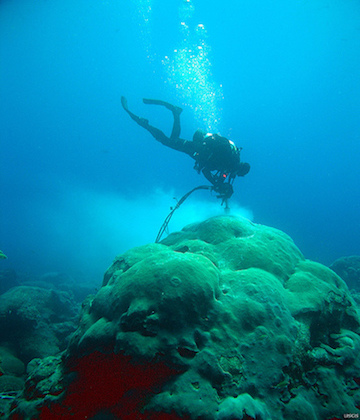420116-Lost CIty.jpg

Divers found "pipes" at a site off the coast of Greece in 2013. Credit: Don Hickey, USGS
Researchers don’t usually summarize their findings with a nifty little rhyme. But a recent paper by scientists from Greece and the U.K. did. “Columns and pavements in the sea, not always antiquities will be,” the researchers wrote.
The subject of their ditty was a site off the Greek island of Zakynthos. In 2013, snorkelers and divers discovered pipes, disks, and other shapes at the bottom of waters that were up to about 15 feet deep. The shapes looked like paving stones or the bases of columns. So the swimmers suspected they’d found a lost city — an ancient site that had disappeared below the waves. And at first, archaeologists did, too.
But when the Greek ministry of antiquities investigated the site, it found no other evidence of human handiwork — no pottery or other artifacts, for example. So it called in geologists to check out the site.
They analyzed the chemistry of the odd structures, and checked them with X-rays and microscopes. And they found that the structures probably were the fossilized remains of an underground plumbing network.
About five million years ago, hydrocarbon-rich fluids bubbled up through cracks and crevices below the sea floor. The rising material scoured “pipes” through the sediments. Microscopic organisms in the sediments used methane in these hydrocarbon seeps to form a natural cement in and around the pipes. Over the millennia, erosion exposed these fossilized structures — making some natural plumbing look like the remnants of a lost city.

